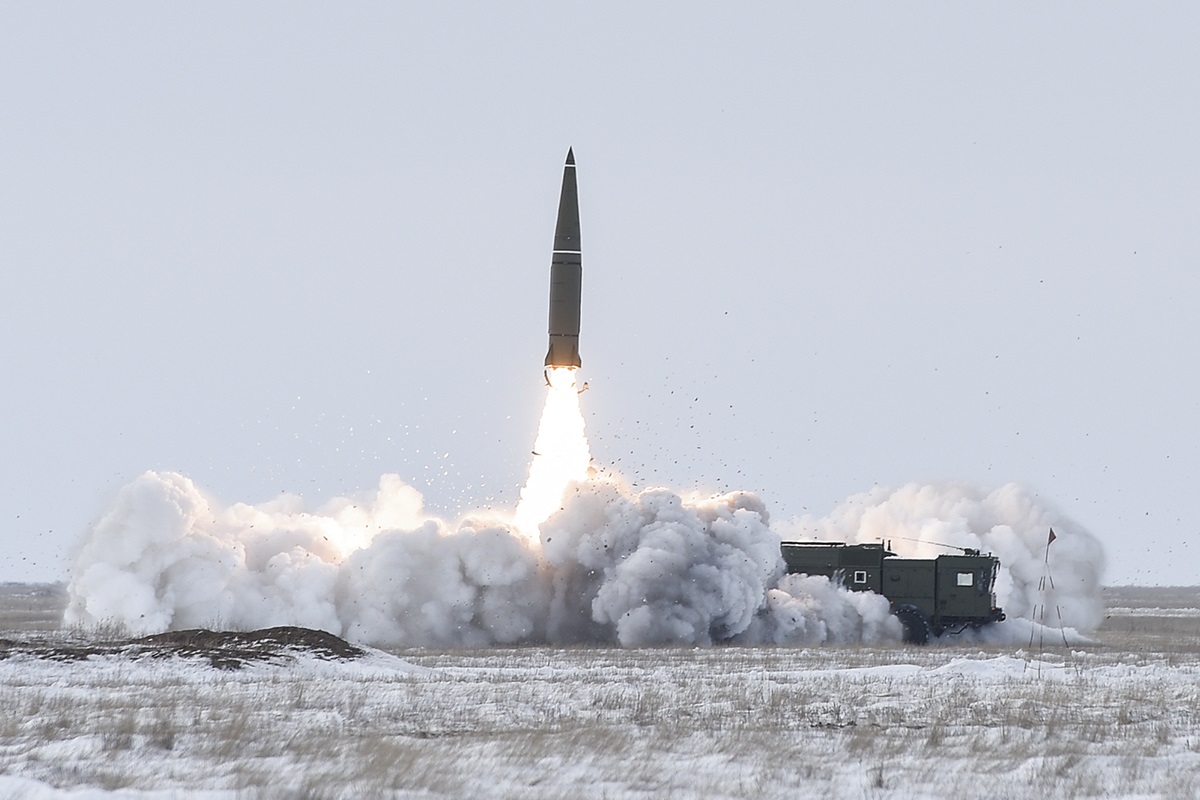According to the Ukrainian Air Force, Russia has completely exhausted its core stocks of Iskander ballistic missiles and has changed tactics on the battlefield as a result.

Iskander Missile. Image Credit: Creative Commons.
The shortage of missiles is a crippling problem for Russia, though could soon be solved by the expected delivery of short-to-medium-range missiles from Iran.
Ukrainian Air Force spokesman Yuriy Ihnat described how the Russian military has changed its targets to minimize the loss of any remaining missiles.
Iskander Missile Shortage
“The enemy is facing severe shortages of Iskander missiles. They’ve already used up their core stocks of them,” Ihnat said. “We see that the enemy is no longer interested in military targets, in troops or other strategic sites.”
Ihnat also claimed that Russia is also turning to North Korea for more missiles.
Russia’s supply of Iskander missiles has been dwindling for some time, and rapidly, too. On October 26, a translated interview between Ukrainian Defense Intelligence directorate chief Kyrylo Budanov and Ukrainian Pravda revealed that just 13% of Russia’s Iskander missiles were left.
“Terror with the use of “Shaheed” may actually be around for a long time. But not with the missiles, because the reserves are almost exhausted. About 13% remains for Iskanders, about 43% for Kalibr-PL, Kalibr-NK missiles, and about 45% for Kh-101 and Kh-555 missiles. It is generally very dangerous to fall below 30%, because it already goes to “NZ” [intact reserve],” Budanov said.
What Is the Iskander?
The Iskander short-range ballistic missile system was developed in the 1980s and has been in use by the Russian military since.
The missile system is capable of firing a number of conventional warheads and has been used during the Ukraine conflict to fire cluster munitions. It is also capable of firing nuclear warheads. Missiles launched by the system can travel up to 500km.
Iskander missiles can be launched in 16 minutes from a mobile launcher, and a second missile can be launched within less than a minute. A dwindling supply of these rockets will make it significantly harder for Russia to continue its campaign of missile strikes on civilian infrastructure in major cities across Ukraine.
Iranian Missiles On The Way
Iran reportedly promised to send surface-to-surface missiles to Iran as well as more drones earlier this month.
A deal is understood to have been agreed on October 6 when Iranian First Vice President Mohammed Mokhber and senior officials from the Revolutionary Guards met with Russian officials in Moscow to confirm the delivery of the weapons.
Iskander Missile Photos

Iskander ballistic missile. Image Credit: Creative Commons.

Iskander Transport Loader 9T250

Iskander Missiles. Image Credit: Creative Commons.
Jack Buckby is a British author, counter-extremism researcher, and journalist based in New York. Reporting on the U.K., Europe, and the U.S., he works to analyze and understand left-wing and right-wing radicalization, and reports on Western governments’ approaches to the pressing issues of today. His books and research papers explore these themes and propose pragmatic solutions to our increasingly polarized society.

